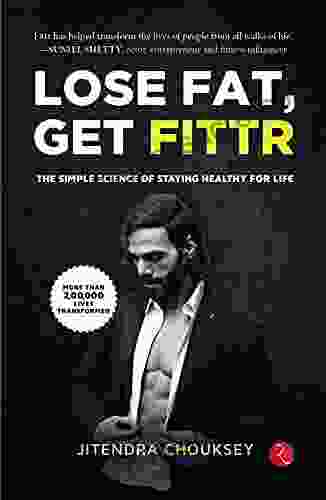Member-only story
Counterfactuals and Causal Inference: A Comprehensive Guide

Arthur Mason
·10.4k Followers· Follow Published in Counterfactuals And Causal Inference: Methods And Principles For Social Research (Analytical Methods For Social Research)
7 min read 1.2k View Claps
97 Respond
<meta name="viewport" content="width=device-width, initial-scale=1.0"> <meta name="description" content="This article provides a comprehensive overview of counterfactuals and causal inference, including the key concepts, methods, and applications."> Counterfactuals and causal inference are two closely related concepts that are essential for understanding the relationship between cause and effect. A counterfactual is a statement about what would have happened if something else had happened. For example, we might say that if we had not taken that job, we would be rich today. Causal inference is the process of drawing s about cause and effect from data. In this article, we will provide a comprehensive overview of counterfactuals and causal inference. We will discuss the key concepts, methods, and applications of causal inference. We will also provide some tips on how to avoid common pitfalls in causal inference. <h2>Key Concepts</h2> **Counterfactuals** A counterfactual is a statement about what would have happened if something else had happened. Counterfactuals are often used to think about the past or to imagine the future. For example, we might think about what would have happened if we had won the lottery or if we had married someone else. Counterfactuals are essential for causal inference. This is because causal inference is based on the idea that we can compare what happened to what would have happened if something else had happened. **Causal Effects** A causal effect is the effect of one variable on another variable. For example, the effect of taking a drug on a person's health is a causal effect. Causal effects can be positive or negative. For example, taking a drug might improve a person's health or it might make it worse. **Potential Outcomes** Potential outcomes are the possible outcomes that could have occurred in a given situation. For example, if we flip a coin, there are two potential outcomes: heads or tails. Potential outcomes are essential for causal inference. This is because causal effects are defined as the difference between potential outcomes. **Treatment Effects** A treatment effect is the effect of a treatment on a group of people. For example, the effect of a new drug on a group of patients is a treatment effect. Treatment effects can be estimated using a variety of methods, including randomized experiments, observational studies, and propensity score matching. <h2>Methods of Causal Inference</h2> There are a variety of methods that can be used to make causal inferences. The most common methods are: **Randomized experiments** Randomized experiments are the gold standard for causal inference. In a randomized experiment, participants are randomly assigned to different treatment groups. This ensures that the treatment groups are comparable on all other factors, so that any differences between the groups can be attributed to the treatment. **Observational studies** Observational studies are studies in which participants are not randomly assigned to treatment groups. Instead, participants are observed and their outcomes are compared. Observational studies are often used to study the effects of treatments that cannot be randomized, such as the effects of smoking or exposure to air pollution. **Propensity score matching** Propensity score matching is a statistical method that can be used to estimate treatment effects from observational data. Propensity score matching creates a comparison group that is similar to the treatment group on all other factors, so that any differences between the groups can be attributed to the treatment. **Regression discontinuity design** Regression discontinuity design is a statistical method that can be used to estimate treatment effects from observational data. Regression discontinuity design uses a discontinuity in a variable to create a comparison group that is similar to the treatment group on all other factors. **Instrumental variables** Instrumental variables are variables that are related to the treatment but not to the outcome. Instrumental variables can be used to estimate treatment effects from observational data. <h2>Applications of Causal Inference</h2> Causal inference has a wide range of applications in social science research. Some of the most common applications include: **Evaluating the effectiveness of social programs** Causal inference can be used to evaluate the effectiveness of social programs, such as job training programs or educational interventions. By comparing the outcomes of participants in the program to the outcomes of a comparison group, researchers can estimate the causal effect of the program. **Studying the effects of public policy** Causal inference can be used to study the effects of public policy, such as the effects of a new tax law or a new environmental regulation. By comparing the outcomes of people who are affected by the policy to the outcomes of people who are not affected by the policy, researchers can estimate the causal effect of the policy. **Assessing the risk of health outcomes** Causal inference can be used to assess the risk of health outcomes, such as the risk of heart disease or cancer. By comparing the outcomes of people who are exposed to a risk factor to the outcomes of people who are not exposed to the risk factor, researchers can estimate the causal effect of the risk factor. <h2>Tips for Avoiding Common Pitfalls in Causal Inference</h2> There are a number of common pitfalls that can occur when conducting causal inference. Some of the most common pitfalls include: **Selection bias** Selection bias occurs when the participants in a study are not representative of the population that is being studied. This can bias the results of the study and lead to incorrect s. **Confounding** Confounding occurs when a third variable affects both the treatment and the outcome. This can bias the results of the study and lead to incorrect s. **Instrumental variable bias** Instrumental variable bias occurs when the instrumental variable is not actually related to the treatment. This can bias the results of the study and lead to incorrect s. Counterfactuals and causal inference are two powerful tools for understanding the relationship between cause and effect. By using these tools, researchers can gain insights into the effects of social programs, public policy, and health interventions. However, it is important to be aware of the common pitfalls that can occur when conducting causal inference. By avoiding these pitfalls, researchers can ensure that their studies produce valid and reliable results. Counterfactuals and Causal Inference: Methods and Principles for Social Research (Analytical Methods for Social Research)
by Stephen L. Morgan
4.6 out of 5
| Language | : | English |
| File size | : | 5239 KB |
| Text-to-Speech | : | Enabled |
| Screen Reader | : | Supported |
| Enhanced typesetting | : | Enabled |
| Word Wise | : | Enabled |
| Print length | : | 526 pages |
Create an account to read the full story.
The author made this story available to Nick Sucre members only.
If you’re new to Nick Sucre, create a new account to read this story on us.
Already have an account? Sign in
1.2k View Claps
97 Respond
Join to Community
Do you want to contribute by writing guest posts on this blog?
Please contact us and send us a resume of previous articles that you have written.
Resources
 Fiction
Fiction Non Fiction
Non Fiction Romance
Romance Mystery
Mystery Thriller
Thriller SciFi
SciFi Fantasy
Fantasy Horror
Horror Biography
Biography Selfhelp
Selfhelp Business
Business History
History Classics
Classics Poetry
Poetry Childrens
Childrens Young Adult
Young Adult Educational
Educational Cooking
Cooking Travel
Travel Lifestyle
Lifestyle Spirituality
Spirituality Health
Health Fitness
Fitness Technology
Technology Science
Science Arts
Arts Crafts
Crafts DIY
DIY Gardening
Gardening Petcare
Petcare David E Stuart
David E Stuart Sarah Zettel
Sarah Zettel Yossi Ghinsberg
Yossi Ghinsberg Helen Clarke
Helen Clarke Lucas Bessire
Lucas Bessire Paula Yoo
Paula Yoo Patrick Mcginty
Patrick Mcginty Dave Pine
Dave Pine Shantel Silbernagel
Shantel Silbernagel Fred H Croom
Fred H Croom Bex Gunn
Bex Gunn Ted Kaczynski
Ted Kaczynski Joshua Becker
Joshua Becker Larry Baush
Larry Baush Mary Griffith
Mary Griffith Zigzag English
Zigzag English Susan M Orsillo
Susan M Orsillo Gary Dean Quesenberry
Gary Dean Quesenberry Joann Cianciulli
Joann Cianciulli Robert Axelrod
Robert Axelrod William F Keegan
William F Keegan Jared Derksen
Jared Derksen Irene Mceachen
Irene Mceachen Mark Booth
Mark Booth Simon Pridmore
Simon Pridmore Steve Schwartz
Steve Schwartz Cj Andersen
Cj Andersen Richard Holmes
Richard Holmes Wendy Doniger
Wendy Doniger Bill Hammack
Bill Hammack Bill Gutman
Bill Gutman Billy Griffiths
Billy Griffiths Manoj Sharma
Manoj Sharma James Dashner
James Dashner Rachna Chhachhi
Rachna Chhachhi Herschel Knapp
Herschel Knapp Blake Sebring
Blake Sebring Linda Bauer
Linda Bauer Kasun Indrasiri
Kasun Indrasiri Curvebreakers
Curvebreakers Claudia Mazzucco
Claudia Mazzucco Kristin N Spencer
Kristin N Spencer Krista Tippett
Krista Tippett James Patterson
James Patterson Frank S Ring
Frank S Ring Jackie Bolen
Jackie Bolen Ramona Finn
Ramona Finn Jeff Wheeler
Jeff Wheeler Bharath Ramsundar
Bharath Ramsundar Leah Day
Leah Day David Benjamin
David Benjamin Paul Brummell
Paul Brummell Zecharia Sitchin
Zecharia Sitchin Charles Duhigg
Charles Duhigg Bryan Irwin
Bryan Irwin Vernon G Zunker
Vernon G Zunker Phoebe Bailey
Phoebe Bailey The Uk Mathematics Trust
The Uk Mathematics Trust Laurie Rubin
Laurie Rubin Jelena Bogdanovic
Jelena Bogdanovic Ryan Johnston
Ryan Johnston John Brierley
John Brierley Jitendra Chouksey
Jitendra Chouksey Nrup Parikh
Nrup Parikh Matthew Bowling
Matthew Bowling Sang H Kim
Sang H Kim Erin Mckittrick
Erin Mckittrick Gianna Sobol
Gianna Sobol Kristopher Martel
Kristopher Martel Brian Crist
Brian Crist Mark Young
Mark Young Charlotte E English
Charlotte E English G William Barnard
G William Barnard Pat Drake
Pat Drake Joan Roughgarden
Joan Roughgarden Colleen Graves
Colleen Graves Supersummary
Supersummary Matt Doeden
Matt Doeden Ross Edgley
Ross Edgley Elizabeth Thompson
Elizabeth Thompson Tom Dodd
Tom Dodd Bill Karwin
Bill Karwin T Whitmore
T Whitmore Brandon Sanderson
Brandon Sanderson Tony Ortega
Tony Ortega Christopher Banecks
Christopher Banecks Heather Long
Heather Long David E Johnson
David E Johnson Phil Genova
Phil Genova Gail Fay
Gail Fay Erin Beaty
Erin Beaty Sheila Mackechnie Murtha
Sheila Mackechnie Murtha Rob Casey
Rob Casey Blaine Bartel
Blaine Bartel Michael Hartman
Michael Hartman Cheryl Marlene
Cheryl Marlene Phil Robertson
Phil Robertson Marc Bona
Marc Bona Daniel J Velleman
Daniel J Velleman Enzo Tonti
Enzo Tonti Rabbi Jason Sobel
Rabbi Jason Sobel Issai Chozanshi
Issai Chozanshi Bill Moeller
Bill Moeller Edwin H Friedman
Edwin H Friedman Kent Hrbek
Kent Hrbek James R Payne
James R Payne Lisa Dorfman
Lisa Dorfman Curt Sampson
Curt Sampson Oscar Nilson
Oscar Nilson Chris Fischer
Chris Fischer Steve Biddulph
Steve Biddulph Sara Low
Sara Low Dina Nayeri
Dina Nayeri Farah Heron
Farah Heron Evan Purcell
Evan Purcell Bill Nowlin
Bill Nowlin Dick Edie
Dick Edie Bryan Mann
Bryan Mann Bill Gladstone
Bill Gladstone Vanessa Lapointe
Vanessa Lapointe Jacques Devore
Jacques Devore Alan Lawrence Sitomer
Alan Lawrence Sitomer Jamie Foxx
Jamie Foxx Leland Chant
Leland Chant Mike Westerfield
Mike Westerfield Yau Ming Ng Thompson
Yau Ming Ng Thompson Erin Mcrae
Erin Mcrae Virginia Smith Harvey
Virginia Smith Harvey Ross Bonander
Ross Bonander Susan Shelby Torrance
Susan Shelby Torrance Dean Keith Simonton
Dean Keith Simonton Jennifer Shannon
Jennifer Shannon Brad States
Brad States Geraldine Van Bueren
Geraldine Van Bueren Rob Steger
Rob Steger Sam Harris
Sam Harris Marsha Vanwynsberghe
Marsha Vanwynsberghe Craig Chappelow
Craig ChappelowMax Youngquist
 Max Lugavere
Max Lugavere Melissa Layne
Melissa Layne John C Norcross
John C Norcross Gary Player
Gary Player Bob Glover
Bob Glover Louis Sachar
Louis Sachar Gavin Weightman
Gavin Weightman Ian Tuhovsky
Ian Tuhovsky Megan Don
Megan Don Luciano Floridi
Luciano Floridi Thomas Bailey
Thomas Bailey Jon M Sweeney
Jon M Sweeney Eric A Weiss Md
Eric A Weiss Md Tiffany Bergin
Tiffany Bergin Bill Schneider
Bill Schneider Robert Bruce Thompson
Robert Bruce Thompson Zoe Hana Mikuta
Zoe Hana Mikuta Davi Kopenawa
Davi Kopenawa Special Tactics
Special Tactics Simon Baron Cohen
Simon Baron Cohen Frank Giampaolo
Frank Giampaolo Martin Davies
Martin Davies Sandi Mann
Sandi Mann Elizabeth A Stanley
Elizabeth A Stanley Maggi Savin Baden
Maggi Savin Baden Izzy Judd
Izzy Judd Fodor S Travel Guides
Fodor S Travel Guides Cherie Dimaline
Cherie Dimaline John Mccannon
John Mccannon Dan Yaccarino
Dan Yaccarino Claire Russell
Claire Russell Carlos Castaneda
Carlos Castaneda Shawn Levy
Shawn Levy Victoria Johnson
Victoria Johnson Tony Guerra
Tony Guerra Mark Solms
Mark Solms Jakub Marian
Jakub Marian Doug Scott
Doug Scott Felicity Aston
Felicity Aston Bjorn Kiggen
Bjorn Kiggen Kiera Cass
Kiera Cass Jake Jacobson
Jake Jacobson Steven M Levy
Steven M Levy Mike Gibson
Mike Gibson Rachael Scdoris
Rachael Scdoris Clement Salvadori
Clement Salvadori John Mccollister
John Mccollister Lee Gutkind
Lee Gutkind Tina Cassidy
Tina Cassidy Dawn Huebner
Dawn Huebner Mark Vanhoenacker
Mark Vanhoenacker Jackie Brown
Jackie Brown Megan Mcgrory Massaro
Megan Mcgrory Massaro Suzannah Rowntree
Suzannah Rowntree Bob Duff
Bob Duff Linda D Dahl
Linda D Dahl Ofer Gal
Ofer Gal Pedro Urvi
Pedro Urvi J D Gauchat
J D Gauchat Diana Wynne Jones
Diana Wynne Jones Ron Elbe
Ron Elbe Dashka Slater
Dashka Slater Bev Pettersen
Bev Pettersen Katie Singer
Katie Singer H P Lovecraft
H P Lovecraft Zavonda Vinson Parrish
Zavonda Vinson Parrish Donncha Hanna
Donncha Hanna Sanford Holst
Sanford Holst Ingrid Chalufour
Ingrid Chalufour Stephen L Morgan
Stephen L Morgan Diondre Mompoint
Diondre Mompoint Richard Post
Richard Post Nancy Romita
Nancy Romita Jarrett Dapier
Jarrett Dapier Hilary Nangle
Hilary Nangle T Edward Nickens
T Edward Nickens Harlan Coben
Harlan Coben Rick Reilly
Rick Reilly Stephan A Hoeller
Stephan A Hoeller Stephen Arterburn
Stephen Arterburn Bill Boyum
Bill Boyum John H Holland
John H Holland Isabel Fonseca
Isabel Fonseca Jen Castleberry
Jen Castleberry Paul Halpern
Paul Halpern Sue Enquist
Sue Enquist Genius Reads
Genius Reads J Robert King
J Robert King Douglas W Ota
Douglas W Ota Editors Of Garden And Gun
Editors Of Garden And Gun Beck Weathers
Beck Weathers Hayley Mitchell Haugen
Hayley Mitchell Haugen Tom Humphrey
Tom Humphrey Scott Wilson
Scott Wilson Michael D Alessio
Michael D Alessio Robert F Burgess
Robert F Burgess Morgan Oostra
Morgan Oostra Elliot Kay
Elliot Kay Jamie Aten
Jamie Aten Thad Beery
Thad Beery Peter Jackson
Peter Jackson Pete Spencer
Pete Spencer Kat Kruger
Kat Kruger Dawn Hadley
Dawn Hadley Editors Of Sports Illustrated
Editors Of Sports Illustrated Bob Duchesne
Bob Duchesne Jessica Taylor
Jessica Taylor Yakima Canutt
Yakima Canutt Martyn Denscombe
Martyn Denscombe Dr Julissa Hernandez Nd Cnhp
Dr Julissa Hernandez Nd Cnhp Michael J Epstein
Michael J Epstein Michael Lempert
Michael Lempert Freddie Fernandez
Freddie Fernandez Richard B Pelzer
Richard B Pelzer Karen Palacios Jansen
Karen Palacios Jansen Bode Miller
Bode Miller Jedd K Parkinson
Jedd K Parkinson Gregg Jackson
Gregg Jackson Robert A Pelcovits
Robert A Pelcovits Frederica Relly
Frederica Relly P J E Peebles
P J E Peebles Justin Lichter
Justin Lichter Laurence Price
Laurence Price Sandra Davidson
Sandra Davidson Peter Aitken
Peter Aitken Marilee Lebon
Marilee Lebon Tim Weston
Tim Weston Gary Nicol
Gary Nicol Doug Fletcher
Doug Fletcher Simon Buxton
Simon Buxton Paris Williams
Paris Williams Dan Blanchard
Dan Blanchard Kate Darling
Kate Darling Daniele Benedettelli
Daniele Benedettelli Holly Donahue Singh
Holly Donahue Singh Marisa Imon
Marisa Imon Callum Roberts
Callum Roberts Carson Sievert
Carson Sievert D C Haenlien
D C Haenlien Ken Venturi
Ken Venturi Lynette Rushton
Lynette Rushton Rod Powers
Rod Powers Christian Smith
Christian Smith Chris Ferrie
Chris Ferrie Neil D Jespersen
Neil D Jespersen General
General Deborah Blum
Deborah Blum Sabaa Tahir
Sabaa Tahir Sandra Berenbaum
Sandra Berenbaum Marty Gitlin
Marty Gitlin Jon Loeliger
Jon Loeliger Matt Parker
Matt Parker Billy Martin
Billy Martin Dan Murphy
Dan Murphy Emma Griffin
Emma Griffin Marie Viljoen
Marie Viljoen David Joyce
David Joyce J Douglas Faires
J Douglas Faires Bill Miller
Bill Miller Helen Irlen
Helen Irlen Andrea Cremer
Andrea Cremer Betsy Herman
Betsy Herman Dr Nancy L Nolan
Dr Nancy L Nolan Rupert Spira
Rupert Spira Kasey Edwards
Kasey Edwards Herbert Dorsey
Herbert Dorsey Tara Bianca
Tara Bianca Jonathan Crichton
Jonathan Crichton Dan Garner
Dan Garner Emma Cannon
Emma Cannon Paul Bellow
Paul Bellow Ernest Raymond
Ernest Raymond Henry M Cowles
Henry M Cowles Bill Bennett
Bill Bennett Jacques Steinberg
Jacques Steinberg Ta Nehisi Coates
Ta Nehisi Coates Kevin Sverduk
Kevin Sverduk Jeremy Paxman
Jeremy Paxman Peter Julius Sloan
Peter Julius Sloan Olivia Gordon
Olivia Gordon Michael Tlanusta Garrett
Michael Tlanusta Garrett Wanza Leftwich
Wanza Leftwich Holger Schutkowski
Holger Schutkowski Karen Armstrong
Karen Armstrong David Price
David Price Elizabeth King
Elizabeth King Kenny Dill
Kenny Dill Laura Nowlin
Laura Nowlin Paul Francis
Paul Francis Rachel Burgess
Rachel Burgess Jamie Dumas
Jamie Dumas J T Williams
J T Williams Chris Sims
Chris Sims Silvia Dunn
Silvia Dunn Jacqueline B Persons
Jacqueline B Persons Marion Zimmer Bradley
Marion Zimmer Bradley Mindy Mcginnis
Mindy Mcginnis Richard W Fisher
Richard W Fisher Eric H Cline
Eric H Cline James W Finegan
James W Finegan Michael W Eysenck
Michael W Eysenck Shannon Sovndal
Shannon Sovndal Nicole R Taylor
Nicole R Taylor Henry Charles Lea
Henry Charles Lea Jeffrey Lindsey
Jeffrey Lindsey Joseph Campbell
Joseph Campbell Mike Veny
Mike Veny Dylan Tomine
Dylan Tomine Conway X Bowman
Conway X Bowman Terry Pratchett
Terry Pratchett James P Allen
James P Allen George C Thomas
George C Thomas Rocky Mcelveen
Rocky Mcelveen Ellen Schuthof Lesmeister
Ellen Schuthof Lesmeister Sophia Freeman
Sophia Freeman Melissa Abramovitz
Melissa Abramovitz Gary Kamiya
Gary Kamiya Carl B Tolman
Carl B Tolman Robert Greene
Robert Greene Hugh Neill
Hugh Neill Adiba Jaigirdar
Adiba Jaigirdar Dinah Bucholz
Dinah Bucholz Jim Greenwood
Jim Greenwood James Alexander Currie
James Alexander Currie Joe Byers
Joe Byers Shelby Mahurin
Shelby Mahurin David Halberstam
David Halberstam Deborah J Rumsey
Deborah J Rumsey Janice Selekman
Janice Selekman Michael Sullivan
Michael Sullivan Joy Hakim
Joy Hakim David Nirenberg
David Nirenberg Robert Byron
Robert Byron Sharon Bergen
Sharon Bergen Manly P Hall
Manly P Hall Zane Grey
Zane Grey Greg Witt
Greg Witt Charles Goodwill
Charles Goodwill Holly Jackson
Holly Jackson John Muir Laws
John Muir LawsR E S
 Zach Schonbrun
Zach Schonbrun C D Holmes Miller
C D Holmes Miller Jessica Denay
Jessica Denay Chris Napier
Chris Napier Clifford A Pickover
Clifford A Pickover Mosby
Mosby Kate Marchant
Kate Marchant Ginger Sinsabaugh
Ginger Sinsabaugh Dan Hamilton
Dan Hamilton Jennifer Kolari
Jennifer Kolari Meagan Trayler
Meagan Trayler Mark Lehner
Mark Lehner Mercedes Lackey
Mercedes Lackey George Mahood
George Mahood Tiffany Loggins Psyd
Tiffany Loggins Psyd Charles Simpson
Charles Simpson Al Walsh
Al Walsh Sue L Hamilton
Sue L Hamilton Russ Harris
Russ Harris Sara Dyer
Sara Dyer John Kettle
John Kettle Joie Jager Hyman
Joie Jager Hyman Jojo Siwa
Jojo Siwa Bill Streever
Bill Streever Ezekiel Eversand
Ezekiel Eversand Stephanie Manley
Stephanie Manley Marie Max House
Marie Max House Marcus Brotherton
Marcus Brotherton Stanislas Dehaene
Stanislas Dehaene Bill Patton
Bill Patton Joshua Foer
Joshua Foer Elizabeth Winthrop
Elizabeth Winthrop Gwendoline Smith
Gwendoline Smith S W Wilcox
S W Wilcox Charlie Craven
Charlie Craven Paul Levy
Paul Levy Henry Nicholls
Henry Nicholls Anya Kamenetz
Anya Kamenetz Wendy Hinman
Wendy Hinman R E Skibiski
R E Skibiski Thomas Cleary
Thomas Cleary Jane Nelsen
Jane Nelsen Elsevier
Elsevier Sheridan Anderson
Sheridan Anderson Max Help Workbooks
Max Help Workbooks Joseph Edminister
Joseph Edminister Rough Guides
Rough Guides Rick Steves
Rick Steves Margo Armstrong
Margo Armstrong Sharmila Desai
Sharmila Desai Fiona Danks
Fiona Danks Carolyn Schulz
Carolyn Schulz Kindle Edition
Kindle Edition Robert P Beebe
Robert P Beebe Kevin Marx
Kevin Marx Michael J Tougias
Michael J Tougias Aylette Jenness
Aylette Jenness Rebekah Nathan
Rebekah Nathan Scarlett Curtis
Scarlett Curtis Jessica Wiebe
Jessica Wiebe Jane Bottomley
Jane Bottomley Colin Thubron
Colin Thubron Ian Wilson
Ian Wilson Steven Hassan
Steven Hassan Charles A Rhodus
Charles A Rhodus Vukota Boljanovic
Vukota Boljanovic Carlos Torres
Carlos Torres Karyn D Hall
Karyn D Hall Valeria Ray
Valeria Ray Kevin C Kelleher Md Md
Kevin C Kelleher Md Md Richard Rohr
Richard Rohr Michael Matthews
Michael Matthews Stacie Mahoe
Stacie Mahoe Styrling Strother
Styrling Strother Michael Volkmar
Michael Volkmar Chris Sajnog
Chris Sajnog Brienne Murk
Brienne Murk Pat Cohen
Pat Cohen
Light bulbAdvertise smarter! Our strategic ad space ensures maximum exposure. Reserve your spot today!
Good Author
 Gene PowellFollow ·6.8k
Gene PowellFollow ·6.8k Allen ParkerFollow ·4.5k
Allen ParkerFollow ·4.5k Billy PetersonFollow ·6.3k
Billy PetersonFollow ·6.3k Howard PowellFollow ·8.3k
Howard PowellFollow ·8.3k Ron BlairFollow ·9.6k
Ron BlairFollow ·9.6k Dakota PowellFollow ·19.6k
Dakota PowellFollow ·19.6k Ivan TurgenevFollow ·11.1k
Ivan TurgenevFollow ·11.1k Dan HendersonFollow ·15.3k
Dan HendersonFollow ·15.3k
Recommended from Nick Sucre

 Sammy Powell
Sammy PowellBalancing Your Hormones Naturally: Regaining Fertility...
Hormones play a vital role in our...
·4 min read
1.4k View Claps
90 Respond

 Kendall Ward
Kendall WardThe Other Baby Book: A Comprehensive Guide to Baby's...
The Other Baby...
·4 min read
1.5k View Claps
90 Respond

 Kenneth Parker
Kenneth ParkerA Comprehensive Guide to Yoga Sadhana for Mothers:...
Motherhood is a...
·6 min read
27 View Claps
5 Respond

 Neil Parker
Neil ParkerInside the Secret Space Programs
An Exposé...
·6 min read
492 View Claps
48 Respond
The book was found!
Counterfactuals and Causal Inference: Methods and Principles for Social Research (Analytical Methods for Social Research)
by Stephen L. Morgan
4.6 out of 5
| Language | : | English |
| File size | : | 5239 KB |
| Text-to-Speech | : | Enabled |
| Screen Reader | : | Supported |
| Enhanced typesetting | : | Enabled |
| Word Wise | : | Enabled |
| Print length | : | 526 pages |
















